

Reshape Your Relationship (Even With Your Ex) and Make It Last Forever in 4 Steps
Developed through years of groundbreaking research involving 83 long-term, happily married couples and hundreds more who have successfully integrated this method into their relationships, this approach provides proven, science-backed insights you can trust
"Love is an art, built on emotions, patterns, and awareness. When a relationship breaks, it’s not the end – it’s your chance to rebuild it stronger and better."
— Mor Cohen, "The Four Foundations of Love"
You’ve broken up, and it feels like the world has stopped! He’s on your mind all day – when you wake up, during work, and even in the quiet moments before you fall asleep. You find yourself replaying the magical moments you shared, asking yourself over and over – is it really over?
Here’s the good news: it doesn’t have to be.
Years of research have revealed that every successful relationship, even one that’s been through a breakup, is built on four simple yet powerful foundations. By understanding these foundations deeply and applying them wisely, you can not only win your ex back but also create a stronger, more fulfilling relationship than you ever imagined.
Step 1: Rareness – Rekindle the Magic That Made Your Relationship Unique
The first foundation of love, Rareness, is rooted in how the couple first met—a story that may not seem extraordinary at first glance but was given profound meaning by the partners themselves. In my research with 83 successful couples, I found that every couple shared a story about their meeting that they had elevated to something rare and significant.
Whether it was a chance encounter at an unexpected place, a meeting that felt destined, or simply a story they chose to imbue with meaning, this sense of rarity became a cornerstone of their bond. It’s not the event itself that matters most, but how the couple viewed it—as a unique and defining moment in their shared journey. Recognizing and celebrating this rareness is what helps rekindle the sense of connection and makes the relationship feel irreplaceable
"In the first moments of love, everything feels extraordinary. The way you met, the way he looked at you, the way your hearts connected—it was as if the universe itself had conspired to bring you together."
— Mor Cohen, "The Four Foundations of Love"
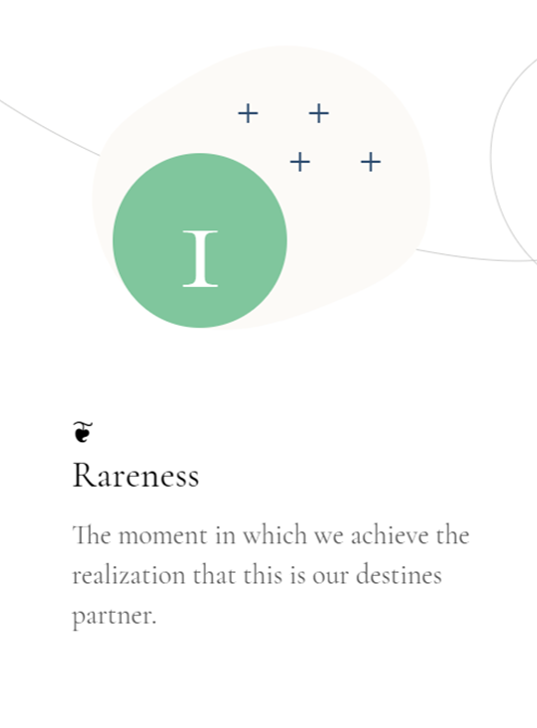
How to Rekindle the Sense of Rareness?
Breakups often leave us dwelling on our loss—what we no longer have and how things went wrong. But science and spirituality both point to a profound truth: the way we see ourselves in the relationship, and the thoughts we project outward, directly influence how others perceive us. By aligning your thoughts with the energy of confidence and gratitude, you can reshape how your ex remembers and experiences the connection, even from afar.
The Science of Connection: Your Thoughts Shape the Relationships—Even Those That Have Ended
Recent studies demonstrate that human minds are more interconnected than we once believed. Research has revealed that brainwave synchronization can occur even when individuals are spatially and sensory isolated. For example, a 1994 study titled The Einstein-Podolsky-Rosen Paradox in the Brain: The Transferred Potential by Grinberg-Zylberbaum and colleagues found that emotionally connected pairs exhibited correlated EEG activity despite being physically separated. Similarly, Standish et al.'s 2004 research provided Electroencephalographic Evidence of Correlated Event-Related Signals Between the Brains of Spatially and Sensory Isolated Human Subjects, further confirming this phenomenon.
Think of your thoughts as signals that travel between you and your ex. This interconnectedness means your focus on positivity, confidence, and personal growth can subtly influence their perception of you, even from afar. By shifting your mindset from “What did I lose?” to “What did I bring to their life?” you radiate an energy of self-assurance and unique value that naturally draws them back.
The Power of Perception: Why Rareness Matters
In the early stages of love, it’s common to feel like the relationship is uniquely magical. This sense of rareness—the belief that your connection was special and unlike anything else—creates a powerful bond. After a breakup, however, this feeling can fade as doubts and insecurities take hold. Your goal is to bring it back, not by obsessing over what you miss, but by focusing on what your ex cherished most about being with you.
Harnessing the Impact of Synchronization
Studies like those conducted by Standish et al. (2004) reveal that emotional and physiological synchronization isn’t limited to proximity. Even when separated, connected individuals show evidence of aligned brain activity and emotional states. This underscores the idea that the energy you project—whether positive or negative—can subtly influence how your ex feels about you.
Here’s how to use this to your advantage:
1. Center Yourself: Before thinking about or reaching out to your ex, cultivate positive emotions. Your calm, confident energy will ripple outward, affecting the way they perceive you.
2. Visualize the Connection: Imagine your ex smiling, enjoying your company, and remembering the best moments of your relationship. These visualizations, supported by your emotional state, can reinforce their subconscious memories of you.
Shifting the Narrative: Focus on Them, Not You
Breakups often push us to focus inward: What did I lose? What went wrong? But lasting change comes when we shift our perspective outward. Instead of dwelling on your pain, reflect on what your ex experienced because of you:
- The laughter and joy you brought.
- The ways you supported them.
- The unique qualities you shared that made your bond irreplaceable.
This mental shift not only changes your self-perception but also affects how your ex remembers the relationship.
Real-Life Strategy: The Ripple Effect
Imagine you’re the pebble dropped into a pond, and your thoughts are the ripples. Research on emotional synchronization, such as The Einstein-Podolsky-Rosen Paradox in the Brain: The Transferred Potential by Grinberg-Zylberbaum et al. (1994), demonstrates that emotionally connected individuals can exhibit synchronized brain activity even when physically separated. Similarly, Standish et al.'s 2004 study, Electroencephalographic Evidence of Correlated Event-Related Signals Between the Brains of Spatially and Sensory Isolated Human Subjects, provides further evidence of this phenomenon.
Practical Tip: Before interacting with your ex, spend five minutes in gratitude. Think of the good moments you shared, focus on your strengths, and project the confidence that you were an irreplaceable part of their life.
This intentional focus on positivity and self-assurance may subtly influence how they perceive and remember you, even from afar.
Case Study: Sandy and Shawn
Sandy met Shawn at a bar while waiting for another date, who never showed up. For many, such an evening might have been a source of frustration or embarrassment. But Sandy approached the situation differently. Instead of dwelling on the disappointment, she saw the moment as an unexpected opportunity. “It’s like the universe sent me directly to you,” she said to Shawn with a playful smile. Her comment immediately shifted the tone of the encounter, transforming what could have been a forgettable evening into a pivotal moment in their lives.
This small but powerful reframing laid the foundation for their relationship. By choosing to interpret a seemingly insignificant coincidence as something meaningful, Sandy communicated openness, optimism, and emotional availability. Her mindset not only strengthened the initial connection but also fostered a sense of shared magic and destiny—a cornerstone for a bond rooted in positivity and mutual appreciation.
A Lesson in Emotional Resilience
Sandy’s playful reframing not only set the stage for her relationship with Shawn but also demonstrated emotional resilience—a quality that’s deeply attractive and impactful in any connection. When you can look at challenges, whether a missed date or a breakup, as opportunities for growth or rediscovery, you inspire those around you to see you in a new, brighter light.
Reframing a past relationship with this lens of positivity doesn’t ignore the challenges—it integrates them as part of the unique journey you’ve shared. Whether it leads to rekindling the romance or simply leaving a lasting impression, this approach ensures that you move forward with confidence and grace.
This case study, drawn from The Four Foundations of Love by Mor Cohen, highlights how shifting perspectives can transform not only new encounters but also existing or past relationships.
Why "No Contact" Isn’t Always the Answer
Many guides insist on a complete communication blackout for several weeks, claiming it’s the best way to make your ex miss you. While this works in some situations—particularly if you were overly emotional or desperate after the breakup, calling repeatedly, demanding answers, or even waiting outside his home—it’s not always practical or effective. If you share responsibilities (like children or work) or if the relationship ended on a more delicate note, cutting off contact could backfire, creating distance or resentment instead of longing.
Instead, focus on intentional communication:
- Limit unnecessary contact to allow space for emotions to settle.
- Be mindful of the tone and energy in your interactions. Every word or message should subtly highlight your growth, strength, and positivity.
- Reconnect gently when the time is right—through shared memories, humor, or moments that remind him of the magic you shared.
Step 2: The Unwritten Agreement – Rewrite the Rules of Your Realtionship
Relationships, whether flourishing or fractured, are guided by silent agreements—unspoken expectations, assumptions, and beliefs that influence how we communicate, set boundaries, and respond to each other. These unwritten rules, often formed subconsciously, can either strengthen the bond or contribute to its breakdown. When reestablishing a connection with your ex, understanding and rewriting this Unwritten Agreement becomes essential.
But here’s the key: this is not just an agreement between you and your ex. It’s an agreement between you and yourself—a silent understanding of how you allow others to treat you. By redefining your internal rules and expectations, you set the tone for how others perceive and respond to you.
"When you are clear about your boundaries and values, the other person naturally adjusts to meet you where you stand. Love begins within."
— Mor Cohen, "The Four Foundations of Love"
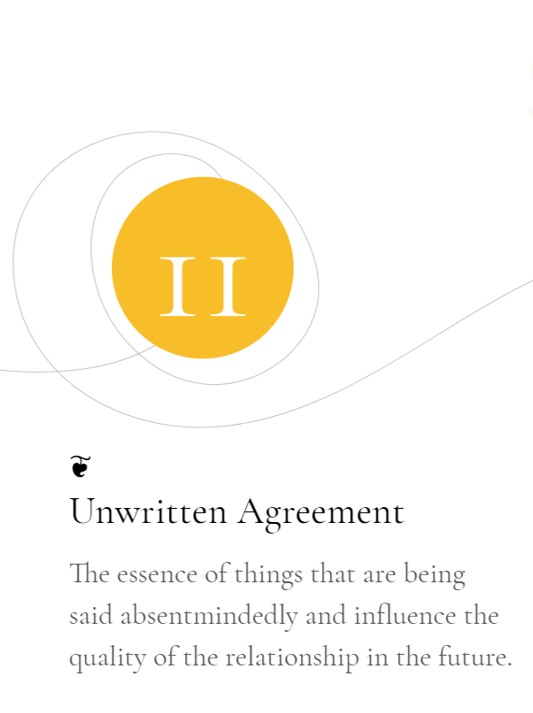
Why It’s Essential to Revisit the Unwritten Agreement
When communication is renewed after a breakup, the patterns of the past are not just likely to resurface—they inevitably will. Just as reconnecting with an old high school friend might unconsciously pull both people back into the roles they once played, revisiting a romantic relationship often brings back the dynamics, beliefs, and behaviors of the past. These patterns emerge naturally, as they are embedded in the "unwritten agreement" that was formed during the earlier stages of the relationship.
The need to revisit and rewrite this agreement is deeply connected to the Kabbalistic principle: "כַּמַּיִם הַפָּנִים לַפָּנִים – כֵּן לֵב הָאָדָם לָאָדָם" (Proverbs 27:19), which translates to: "As water reflects the face, so the heart of man reflects the man." This verse, in its original Hebrew, reveals profound insight into the nature of relationships. Kabbalah teaches that our relationships act as a mirror, reflecting not only how we see ourselves but also the deeper aspects of our identity with which we choose to align.
Our relationships are a reflection of what we value, the beliefs we hold, and the aspects of ourselves with which we identify. For instance, if we internalize a narrative of inadequacy or unworthiness, that perception will shape the way others respond to us. Conversely, when we align ourselves with values like self-respect, compassion, and authenticity, those traits are mirrored back in our interactions.
Revisiting the "Unwritten Agreement" after a breakup means becoming acutely aware of these internal reflections. What story do you tell yourself about love? Which aspects of your identity drive your expectations in relationships? When you rewrite this internal narrative, the reflection changes, creating a foundation for healthier, more balanced interactions. This inner work is not just a step toward personal growth—it is a necessary process for reshaping the dynamics of love and rewriting the script of the relationship.
The Science That Validates Ancient Wisdom: The "Unwritten Agreement"
Recent scientific findings provide fascinating support for the ancient concept of the "Unwritten Agreement"—a silent contract that shapes every relationship. Research by Golland et al. (2015) reveals that individuals unconsciously align their emotional and physiological states, even without explicit communication. This alignment highlights how the unspoken beliefs we hold about ourselves influence the way others treat us, confirming the ancient understanding that our internal narrative is a powerful force in shaping relationships.
Insights from the Research
Golland's study primarily examined how emotional and physiological synchronization occurs between individuals, focusing on relationships of various types—not exclusively romantic. Participants included pairs who shared close emotional bonds, such as friends, romantic partners, and even strangers placed in emotionally charged scenarios. The research demonstrated that emotional alignment is not restricted to romantic relationships but occurs in any situation where individuals share a meaningful interaction.
This insight broadens the relevance of the "Unwritten Agreement." It highlights that these subconscious dynamics are at play not only in romantic relationships but also in friendships, familial connections, and professional relationships. For example, a friend’s empathetic response to another’s distress is guided by this invisible synchronization, much like a romantic partner's ability to "sense" emotional shifts.
The research measured synchronization using physiological markers, such as heart rate and respiration, as well as behavioral cues, including facial expressions and body language. Even in non-romantic contexts, individuals naturally mirrored each other’s emotional states, supporting the idea that our internal beliefs and emotional cues establish the unspoken rules of any interaction.
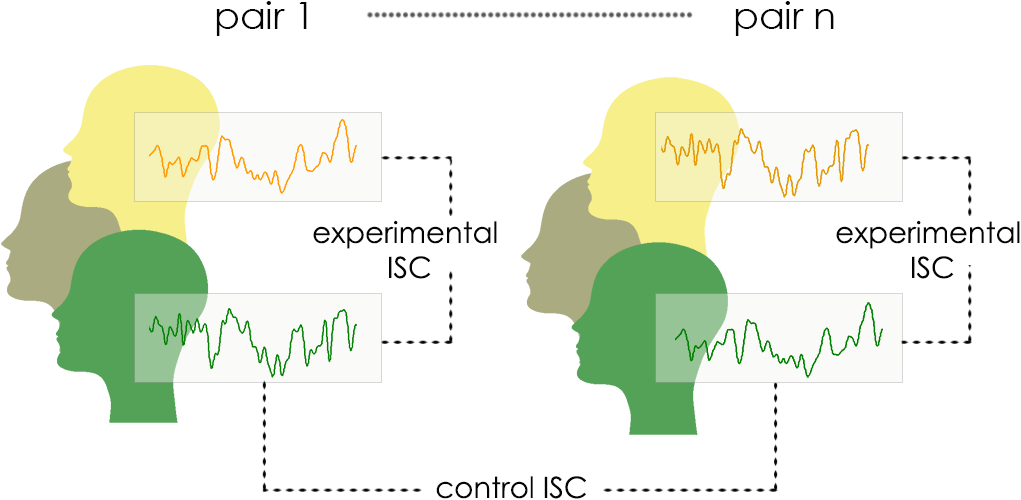
Neural synchronization observed between pairs during emotional interactions, showcasing how internal states align and influence connections Golland et. al 2015
How This Relates to the "Unwritten Agreement"
While the study wasn’t limited to couples, its findings are especially impactful in romantic relationships, where the "Unwritten Agreement" governs deeply personal and emotionally charged interactions. In a romantic context, the alignment is heightened because partners are often more emotionally invested and attuned to each other’s signals. However, the principles discovered in this research apply universally: any relationship reflects the emotional groundwork laid by one’s inner state and expectations.
The study further reinforces the transformative potential of rewriting the "Unwritten Agreement." Whether with a partner, a friend, or a colleague, shifting internal beliefs to project confidence, self-worth, and openness creates ripple effects, positively altering the dynamic of the connection.
Case Study: Leah and Daniel
Leah and Daniel’s tumultuous breakup stemmed from a breakdown of their "Unwritten Agreement"—those unspoken rules that define the dynamic of any relationship. Both felt their boundaries were disrespected, but neither could articulate their needs effectively, leading to a cycle of miscommunication, frustration, and eventual separation.
After months of no contact, Leah made the decision to focus inward. Through reflection, she identified a core pattern in her relationships: she avoided expressing her needs, fearing it would lead to conflict or rejection. This avoidance created an "Unwritten Agreement" in which she implicitly signaled to her partners that her needs were secondary, fostering an unbalanced dynamic where her voice often went unheard. Over time, this silence built resentment, eroding trust and intimacy.
Leah began rewriting her internal narrative, addressing the fears that had silenced her. She practiced asserting her needs with clarity and calmness, not from a place of anger but from self-respect. This inner work shifted her internal "agreement" to one that prioritized open communication and emotional reciprocity. She replaced the old belief of "If I express my needs, I’ll push people away" with a new understanding: "Expressing my needs invites clarity and connection."
When Daniel eventually reached out to reconnect, Leah approached the conversation differently. Instead of falling back into old patterns of people-pleasing or avoiding difficult topics, she confidently shared her reflections:
“I’ve realized how important it is to communicate openly about what I need in a relationship, and I’ve been working on being more clear about that.”
This simple yet profound statement reflected her rewritten "Unwritten Agreement." It set a new tone for their interaction—not one of blame, but of personal growth and mutual respect. Daniel, attuned to the shift in her energy, found himself naturally responding to her clarity. He began respecting her boundaries not because she demanded it, but because her self-assuredness and openness created a space where mutual understanding felt effortless.
The Power of Inner Alignment
The Power of Inner Alignment
Leah’s transformation demonstrates the principle that changing the internal agreement with oneself can profoundly reshape external dynamics. By redefining her expectations and communicating her values with confidence, Leah established a new "contract" with Daniel, rooted in mutual respect and emotional alignment.
This case highlights how the "Unwritten Agreement" isn’t just about setting boundaries—it’s about embodying them. When Leah aligned her internal beliefs with her external actions, she naturally invited Daniel to meet her at this new, healthier standard. This shift underscores the power of inner work in not only healing relationships but also fostering deeper and more authentic connections moving forward.
Step 3: Elevating the Relationship – Building a Sacred Bond
By building a sacred bond, you move beyond the superficial aspects of the relationship and create a foundation rooted in shared understanding, mutual respect, and a sense of purpose.
Building this foundation is a process that requires both partners to contribute, but it starts with personal preparation. Before reconnecting, it’s crucial to reflect on what you truly value in a relationship and to prepare yourself emotionally to approach the connection with openness, patience, and confidence. Entering this stage without preparation can lead to repeating past mistakes, making it harder to achieve the depth you seek.
The true challenge lies in transforming the relationship into something sacred and enduring—one that can withstand future difficulties and grow stronger over time. This is why the Sacred Bond requires intentional effort, both in the way you approach your ex and in how you co-create a partnership that feels irreplaceable and meaningful to both of you.
"By sanctifying your relationship, you elevate it beyond time and place, making it eternal and sacred"
— Mor Cohen, "The Four Foundations of Love"
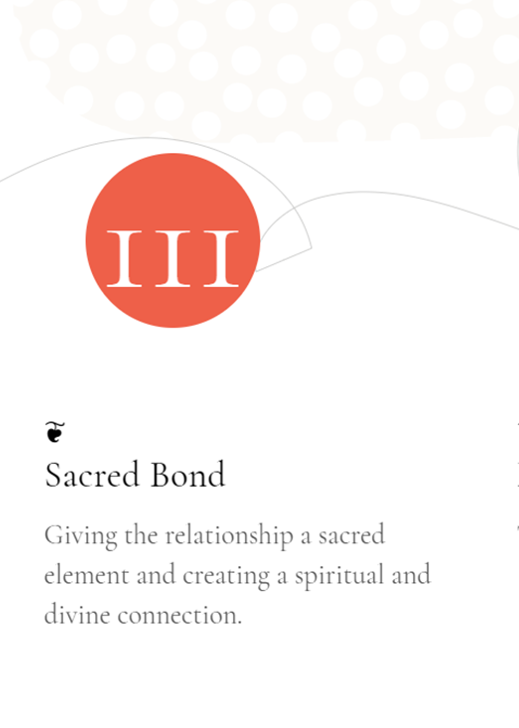
Grounded in Research: The Power of Intentional Communication
In my own research, conducted with 83 long-term, The 4 Foundations of Love, happily married couples, I discovered that a critical foundational element—the ability to intentionally shape the narrative of the relationship through communication—was present in every single partnership. These couples consistently emphasized the importance of framing their relationship as unique and meaningful, which not only deepened their connection but also strengthened their bond over time.
This finding aligns with Relational Dialectics Theory ["Relational Dialectics Theory: A Dialogue with the Contradictions of Personal Relationships" by Leslie A. Baxter and Barbara M. Montgomery, published in Journal of Family Theory & Review in 2019.], which demonstrates that the way we communicate within relationships does more than express feelings—it actively shapes how the relationship is perceived by both partners. By describing a relationship as "special," "deep," or "meaningful," we imprint those qualities into our partner’s mind, subtly influencing how they value and respond to the connection.
The theory also highlights the dynamic tension between opposing forces in relationships—like independence vs. closeness—and reveals how intentional communication can help harmonize these forces. By choosing words and actions that emphasize the depth and irreplaceability of the bond, partners co-create a narrative that elevates the relationship to something truly sacred.
Practical Strategies
Highlight Positive Memories: When you do communicate, use subtle reminders of what made the relationship special. For instance, mention a meaningful memory with something like:
“I was thinking about how much fun we used to have at [specific event]—it reminded me of how unique our connection was.”
Create Emotional Depth with Openness: Use your limited interactions to share honest, reflective thoughts without being overwhelming. For example:
“I’ve been reflecting on what made our relationship meaningful to me—it was always the way we understood each other so well.”
Highlight Shared Values
Reaffirm what made your relationship special by bringing attention to values or goals you both hold dear. For instance:
“One thing I’ve always admired is how much we’ve supported each other’s dreams.”
Build Curiosity: Instead of focusing on the past alone, gently hint at growth or new perspectives that might intrigue your ex. For example:
“I’ve realized so much about myself lately, and I’m learning how to appreciate the good in everything we experienced together.”
This approach uses your words to subtly shape how your ex views the relationship while planting seeds of curiosity and positivity, even within minimal communication.
Why the Sacred Bond Matters
Believing that your relationship is sacred elevates it above any other connection you’ve had—or could ever have. By reframing the bond as something unique and irreplaceable, and supporting this belief with real examples and shared memories, you create a powerful shift in how your ex perceives the relationship.
This perspective imprints the connection as sacred in their mind, making it feel unparalleled and unbreakable. This stage isn’t just about reconciliation—it’s about transforming your relationship into something profoundly meaningful and enduring.
Step 4: Building a Future of Meaning – Supporting Each Other’s Growth
This foundation focuses on creating a shared vision of the future, strengthening mutual commitment, and ensuring that the renewed relationship has a clear and meaningful direction. It’s about transitioning from reconnection to building a life together, with aligned aspirations and goals that reinforce the bond.
Although this foundation requires communication between you and your partner, it’s essential to prepare for this stage now. Begin by understanding how you will embed or strengthen this foundation in your relationship the moment communication is reestablished.
"The future dimension allows you both to choose one another on a daily basis, creating an image of the future that inspires and strengthens your bond. When you envision your path together, it transforms your relationship into something both profound and enduring."
— Mor Cohen, "The Four Foundations of Love"
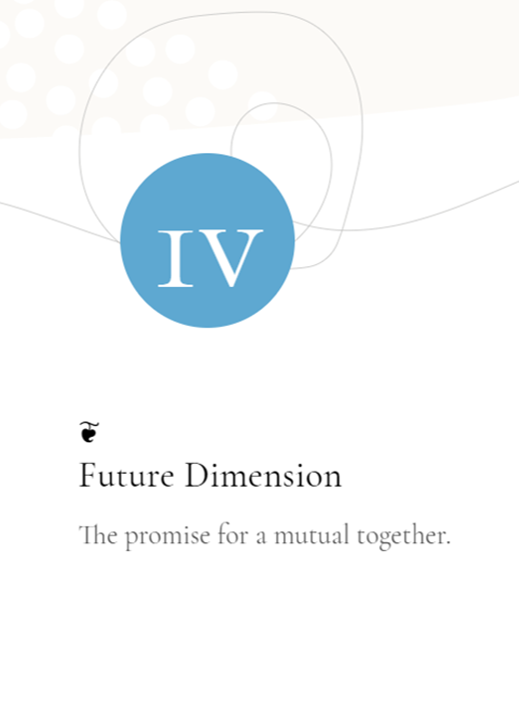
Why Shared Future Goals Matter
In my research with 83 long-term, successful couples, I found that shared future goals were present in every thriving partnership. These couples consistently emphasized the importance of aligning their lives around a mutual vision. This wasn’t limited to shared aspirations like family, career, or lifestyle—it also included a unique dynamic where each partner actively supported the other's individual goals and growth. The ability to create a unified future while nurturing one another’s personal ambitions made these relationships not only resilient but deeply fulfilling.
This finding is strongly supported by scientific research, particularly the work of Rusbult, Finkel, and Kumashiro (2009). Their study highlights the Michelangelo Phenomenon, which describes how close partners shape each other’s development by affirming and supporting each other’s ideal selves. When one partner recognizes and actively encourages the aspirations and potential of the other, it fosters mutual growth and satisfaction.
For example, if one partner has a career ambition or a personal passion, the other’s encouragement and practical support—such as offering advice, showing interest, or removing obstacles—play a critical role in making those dreams a reality. This not only strengthens the bond but also aligns the couple’s future around both shared and individual successes.
Research Insights on Mutual Support and Commitment
Rusbult, Finkel, and Kumashiro’s study in Current Directions in Psychological Science explains that commitment within a relationship isn’t just about staying together—it’s about creating an environment where each partner feels encouraged to pursue their aspirations while working toward shared goals. The study found that couples who engage in this mutual affirmation experience deeper emotional closeness and a stronger sense of purpose in their relationship.
Additionally, their research highlights three key mechanisms—similar to the findings in my own study—where thriving couples consistently demonstrated these principles:
Perceptual Affirmation: Viewing one’s partner in a way that aligns with their ideal self (e.g., recognizing their ambition, kindness, or creativity).
Behavioral Affirmation: Taking actions that actively support the partner’s aspirations (e.g., providing encouragement, creating opportunities, or removing obstacles).
Mutual Growth: The natural evolution of both partners as they inspire and nurture each other toward their personal best.
These mechanisms, as seen in both my research and the study, show how the synergy between personal growth and shared goals is vital to creating a strong and enduring relationship.

The Four Foundations of Love is more than a guide—it’s a comprehensive resource rooted in years of research and real-life experience. Inside, you’ll find insights from my study of 83 successful couples, combined with powerful case studies from my clinic. These stories showcase how women facing separation, divorce, or heartbreak were able to rebuild their relationships by understanding and strengthening the core foundations.
Through this book, you’ll learn:
• How to identify and repair the broken or missing foundation in your relationship.
• Proven methods for creating deeper trust, connection, and understanding.
• Inspiring real-world examples of women who transformed their relationships, even after significant challenges.
• This book gives you the tools to approach your relationship with clarity and purpose. Start your journey today—download the digital book and uncover the path to lasting love.
THE GUIDE – THE 4 FOUNDATIONS OF LOVE
What makes a couple stay together and feel they have found the one? What makes a random encounter exceptional? How can you know if you have chosen the right person? How can you avoid wasting precious time? And how you can get your ex back?
The guide “The 4 Foundations of Love” is based on a fascinating study, in which a great number of successful couples were interviewed for one purpose: to capture the essence of their unique relationship – what makes them keep loving their partner years after they have met, or even love them more.
According to an NLP model, these couples share the following 4 crucial foundations:
- RARENESS – the moment of realization that this is our destined partner.
- UNWRITTEN AGREEMENT – the essence of words used instinctively and their impact on the quality of the relationship.
- SACRED BOND – the relationship’s sacred element and the couple’s divine connection.
- FUTURE DIMENSION – the promise of a mutual future.
Hundreds of women who have implemented this method in their relationships, have claimed that it has restored their sense of confidence and control, created intimacy and power, and elevated their relationship to a unique level of spirituality. Thus, you can reshape your relationship and take to it the next level with joy and ease: without overbearing conversations, without trying to convince your partner, without games, and without waiting for your partner’s cooperation.
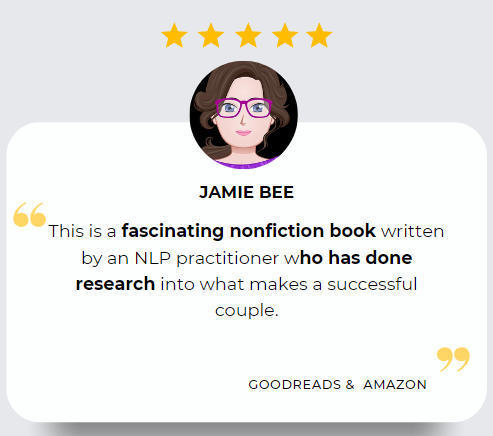
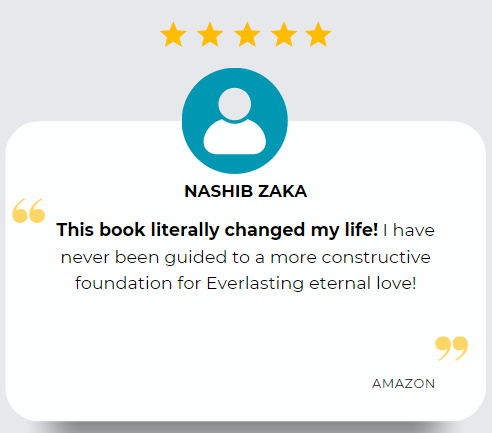
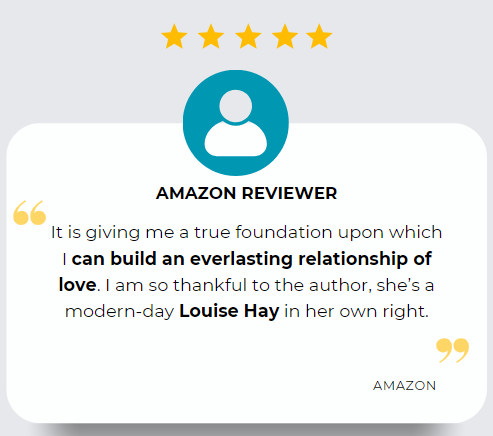



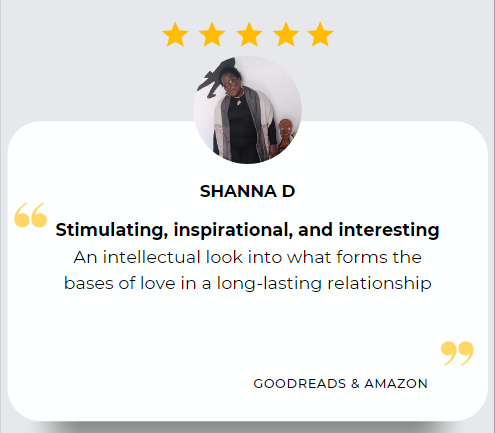




MOR COHEN
The author is a researcher and entrepreneur in the medical field. She has an M.Sc.Med and MBA, as well as being a qualified NLP therapist, assisting couples overcoming breakups and relationship crises.
Identifying and mapping the four foundations, is a focal tool the author has used in her work with hundreds of women going through a relationship crisis, looking to rectify their relationship status.
Applying the method with these women, showed that couples who already had the four elements (even if their needed strengthening) could easily reconnect and rectify their relationship. However, couples who didn’t have these elements, were more inclined to breakup, disconnect and move on.
In this book, the author describes the possibility of predicting the continuation of a relationship according to the existence and strength of these foundations. It also describes how prepare the ground for establishing them, to ensure your relationship becomes eternal.




